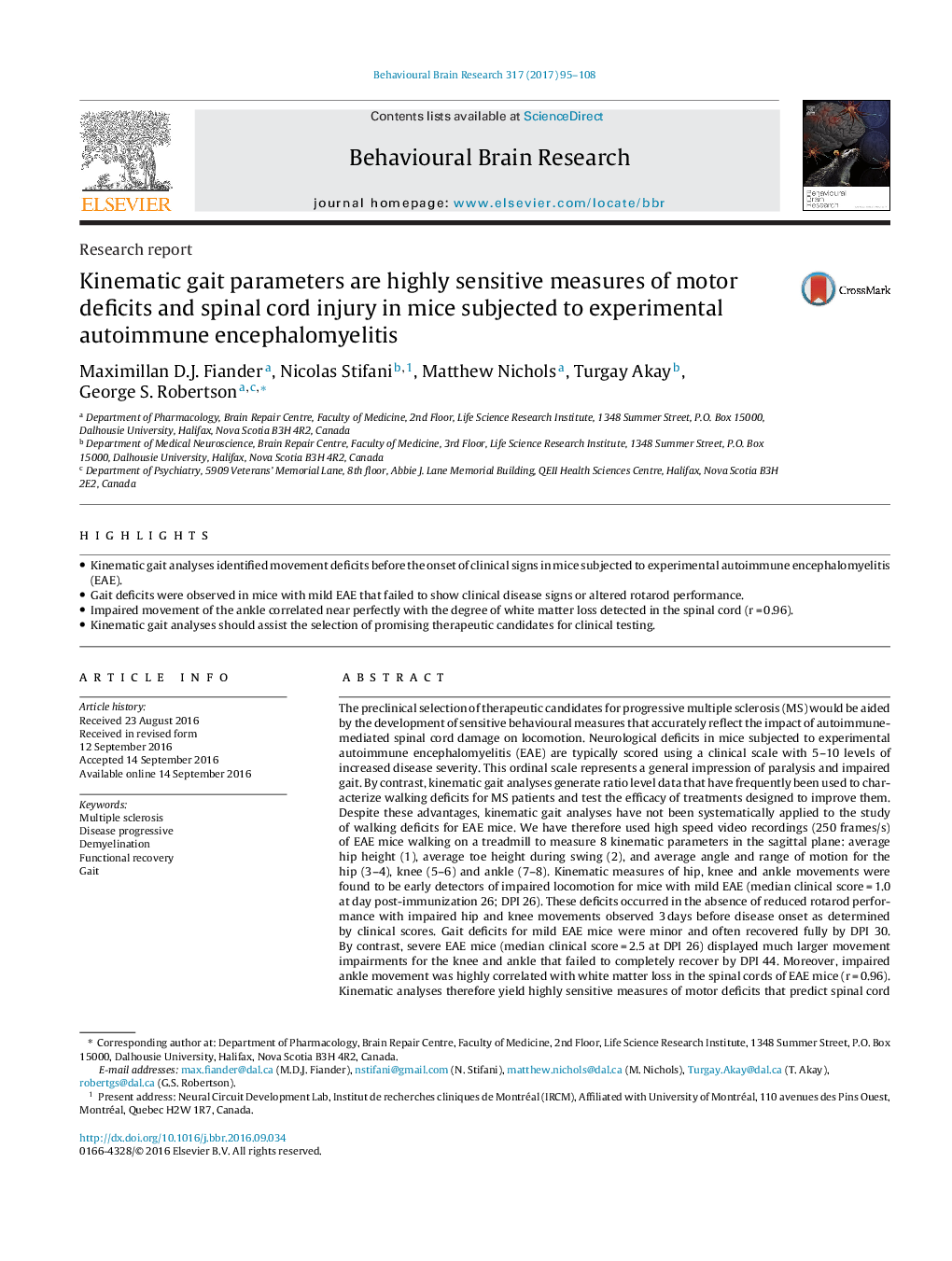| کد مقاله | کد نشریه | سال انتشار | مقاله انگلیسی | نسخه تمام متن |
|---|---|---|---|---|
| 4311952 | 1612916 | 2017 | 14 صفحه PDF | دانلود رایگان |
• Kinematic gait analyses identified movement deficits before the onset of clinical signs in mice subjected to experimental autoimmune encephalomyelitis (EAE).
• Gait deficits were observed in mice with mild EAE that failed to show clinical disease signs or altered rotarod performance.
• Impaired movement of the ankle correlated near perfectly with the degree of white matter loss detected in the spinal cord (r = 0.96).
• Kinematic gait analyses should assist the selection of promising therapeutic candidates for clinical testing.
The preclinical selection of therapeutic candidates for progressive multiple sclerosis (MS) would be aided by the development of sensitive behavioural measures that accurately reflect the impact of autoimmune-mediated spinal cord damage on locomotion. Neurological deficits in mice subjected to experimental autoimmune encephalomyelitis (EAE) are typically scored using a clinical scale with 5–10 levels of increased disease severity. This ordinal scale represents a general impression of paralysis and impaired gait. By contrast, kinematic gait analyses generate ratio level data that have frequently been used to characterize walking deficits for MS patients and test the efficacy of treatments designed to improve them. Despite these advantages, kinematic gait analyses have not been systematically applied to the study of walking deficits for EAE mice. We have therefore used high speed video recordings (250 frames/s) of EAE mice walking on a treadmill to measure 8 kinematic parameters in the sagittal plane: average hip height (1), average toe height during swing (2), and average angle and range of motion for the hip (3–4), knee (5–6) and ankle (7–8). Kinematic measures of hip, knee and ankle movements were found to be early detectors of impaired locomotion for mice with mild EAE (median clinical score = 1.0 at day post-immunization 26; DPI 26). These deficits occurred in the absence of reduced rotarod performance with impaired hip and knee movements observed 3 days before disease onset as determined by clinical scores. Gait deficits for mild EAE mice were minor and often recovered fully by DPI 30. By contrast, severe EAE mice (median clinical score = 2.5 at DPI 26) displayed much larger movement impairments for the knee and ankle that failed to completely recover by DPI 44. Moreover, impaired ankle movement was highly correlated with white matter loss in the spinal cords of EAE mice (r = 0.96). Kinematic analyses therefore yield highly sensitive measures of motor deficits that predict spinal cord injury in EAE mice. These behavioural techniques should assist the selection of promising therapeutic candidates for clinical testing in progressive MS.
Journal: Behavioural Brain Research SreeTestContent1 - Volume 317, 15 January 2017, Pages 95–108
